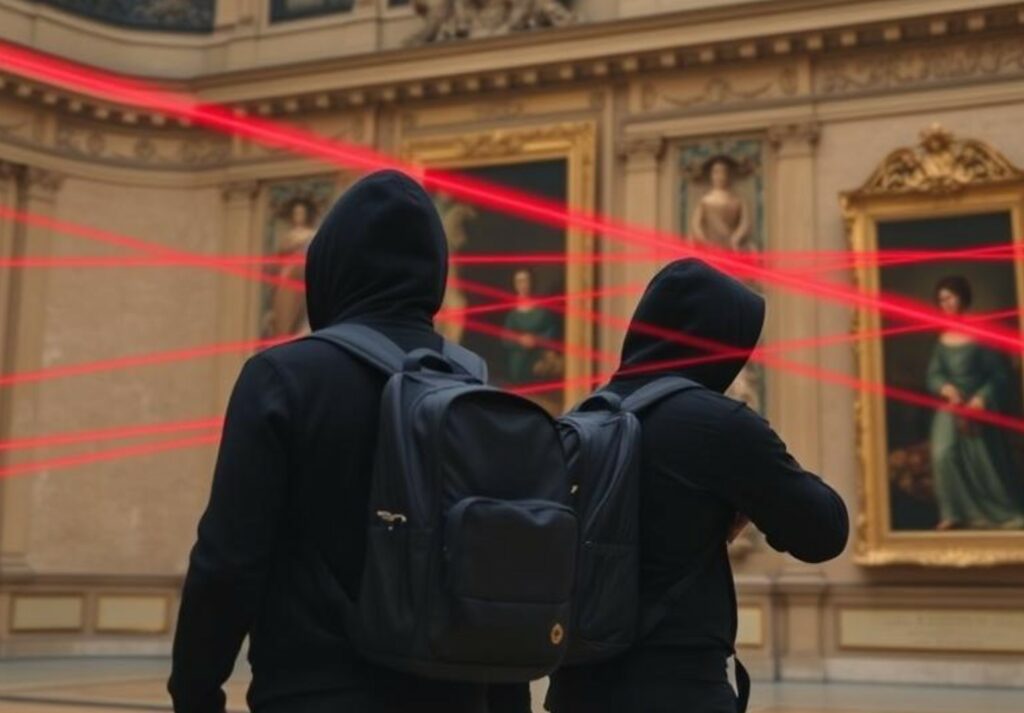
Luca Errico : 1 November 2025 08:43
The event that shook the world on October 19, 2025, was not a natural disaster or a financial collapse, but the sensational theft of Napoleon’s jewels from the Louvre Museum. Beyond its historical and artistic value, for the cybersecurity community, this episode represents the most educational and costly Physical Pen Test case study of the year.
The Louvre, with its multilayered security protocols, advanced sensors (biometric, seismic, infrared) , and elite security team, can be conceptualized as the physical equivalent of a corporate network with a Zero Trust architecture and a next-generation WAF/Firewall . Its breach demonstrates that true resilience is not based on a single technology, but on the continuous integration and verification of processes, people, and technologies.
A successful attack like the one on the Louvre doesn’t start with action, but with meticulous intelligence gathering. This is the digital equivalent of open source intelligence .
The perpetrators likely spent months, if not years, studying the physical “attack surface” using Passive and Active Identification . They analyzed patrol cycles, handoffs, and shift changes, often detectable through simple observations or unexpected social media sources, as well as surveillance camera “blind spots.”
Anyone involved in cybersecurity cannot fail to see a direct parallel with the TTPs of an APT that fingerprints targets by mapping subdomains, analyzing public document metadata, and studying key employees’ social media profiles to identify technology and behavioral vulnerabilities. The attack only occurs when the threat model is complete and verified. The goal is not to seek an obvious exploit , but to build a comprehensive and predictive threat model that allows for action with a high probability of success and a low probability of detection.
Once the reconnaissance is complete, the next step is entry. The fact that the vault was reached without a major physical break-in indicates a sophisticated bypass of the primary defenses.
Physical security systems, like digital ones, are vulnerable not by their existence, but by their configuration. Bypassing a motion sensor with motion below the detection threshold or neutralizing an alarm by exploiting faulty timing between shifts is the equivalent of exploiting a WAF bypass or an HTTP Request Smuggling vulnerability where an ambiguous payload goes undetected.
Most likely, a weakness in the firmware of a security component or a logical flaw in the alarm communication protocol could have been exploited: the ” zero-day flaw ” in the physical alarm system. Essentially, the security protocol, rather than its physical robustness, was abused.
But the attack isn’t complete without addressing the weakest link in the chain. This is where the most critical element comes into play, and where the cybersecurity analogy is starkest.
Speculation about the use of counterfeit uniforms or the targeted infiltration of an insider highlights the effectiveness of behavioral manipulation.
Tailgating or piggybacking isn’t just about following an authorized person through an entrance. This is a form of sophisticated tailgating :
You can spend millions on technology, but if you don’t test your security awareness and staff vetting procedures against social engineering , security will always fail on the human ring.
Once the human obstacle is overcome, the ultimate success is not access, but the exfiltration of the “Crown Jewels” without interception. Moving within the museum without triggering internal alarms or being intercepted by security guards, the equivalent of Blue Team/SOC , requires precise knowledge of escape routes and blind spots. An unconventional lateral movement is required.
The exit method, captured in the video showing the thieves climbing down the ladder of the “work” truck, is emblematic: it’s the digital equivalent of a Command and Control Channel disguised as legitimate traffic, such as DNS or ICMP tunneling . The exfiltration was rapid and surgical, minimizing the time the thieves were exposed to sensors, just as an APT minimizes its stay on the network after reaching its target.
From OSINT to C2 via social engineering , the Louvre theft is definitive proof that security, in any domain, is not a static state, but a continuous process of validation and improvement. Trust in defensive barriers, the ” Physical Firewall ,” has led to a complacency that has been exploited.
For the cybersecurity community, this event reinforces the principle that controls must be regularly tested from an offensive perspective. Only a rigorous penetration testing program that simulates 360-degree attacks using technology, processes, and people can expose the vulnerabilities that would otherwise be exploited by the next APT with the right tools.
Security always fails due to lack of imagination and the Louvre thieves have just reminded us to expand our
 Luca Errico
Luca Errico